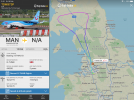It all seems to do with money and training, on the money side of it, Boeing just want to eke as much money out of an outdated platform by as others here have said bodging it to within an inch of it's life, moving the CoG has long been said to have been what started the problems in the first place.
In terms of training, I point you to the Air France 296 Airbus crash at Habsheim, yes there was other factors, but Airbus denied for years that there was any issues with the engine or any delay in thrust, if you believe a lot of the legal team on behalf of the very experienced pilot, Airbus even went as far as to collude with the French authorities to switch black boxes as they had buyers queuing up for the A320 and anything other than pilot error would have eradicated those orders, the pilot still to this day claims that even though the alpha protection protocol had activated to prevent the plane from stall, as soon as full power was asked for, he should have got it, he states he had to throttle back and ask for it a 2nd time before it responded and by that time it was too late.
Airbus/Air France hadn't trained the pilot correctly and told him of a lot of the features of the new plane, the A320 has simply thought that at that height and speed, that the pilot was landing so ignored the instruction for go around power, the pilot didn't even know this "safety" feature existed, he was the senior pilot for Air France and yet nobody told him of these features.
The 737 Max is another incident where "safety" systems are fitted to a plane and the pilots who fly them and to a certain extent the carriers that use them, were not given detail about them or told how to deal with them in certain incidences.



